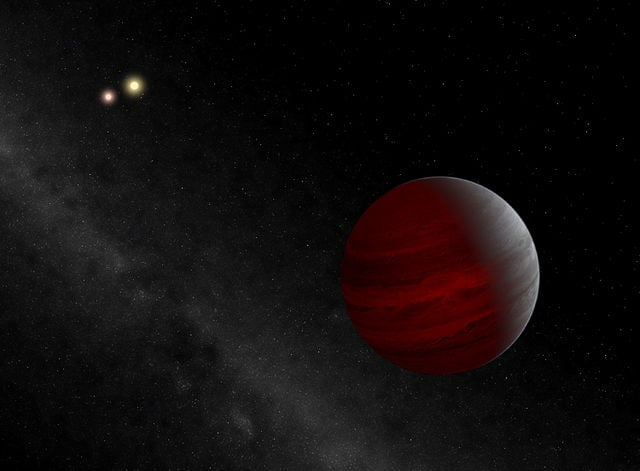
The James Webb Space Telescope has discovered that the atmospheres of gas giant planets in the Milky Way galaxy can be different from those in our solar system.
Scientists have detected that the atmosphere of a far-off exoplanet called HD149026b, also known as Smertrios, is abundant in heavy elements. Heavy elements are anything other than hydrogen and helium, and in Smertrios’ atmosphere, there are large amounts of carbon and oxygen. The findings have taken astronomers by surprise.
Link Between Planet’s Mass and Concentration of Heavy Elements
There is a visible link between a planet’s mass and the concentration of heavy elements in its atmosphere, as seen in the gas giant planets of our solar system, like Jupiter, Saturn, Uranus, and Neptune. The heavier the planet, the lower the concentration of these elements in its atmosphere.
A professor of astronomy and astrophysics at the University of Chicago, Jacob Bean, who is also the lead author of the paper, said, “The giant planets of our solar system exhibit a nearly perfect correlation between both overall composition and atmospheric composition and mass.”
Astronomers have discovered that the atmosphere of the exoplanet Smertrios has a much more diverse composition than other gas giant planets.
The planet is similar in mass to Saturn, but its atmosphere has a significantly higher concentration of heavy elements, up to 27 times more than the amount found in Saturn, according to Jonathan Lunine, a co-author of the study and a professor at Cornell University.
More Details About Smertrios
Smertrios or HD149026b is a hot Jupiter, a gas-giant planet that orbits its parent star very closely. It has an extremely short year of only three Earth days, and its atmosphere reaches temperatures of up to 2,700 degrees Fahrenheit, which is much hotter than even the hottest planet in our solar system, Venus. However, the high temperature does not explain the unusual composition of the planet’s atmosphere.
“It appears that every giant planet is different, and we’re starting to see those differences thanks to JWST,” Jonathan Lunine said. He further said, “In this paper, we have determined how many molecules there are relative to the primary component of the gas, which is hydrogen, the most common element in the universe. That tells us quite a lot about how this planet formed.”
BREAKING 🚨: Researchers have discovered a new planet with two moons using the James Webb telescope
‘with clear detections of water, methane, and carbon monoxide’ pic.twitter.com/d4AJxDItfA
— Latest in space 🪐 (@latestinspace) March 22, 2023
By studying the composition of a planet’s atmosphere, scientists can learn about the chemistry of its parent star and the materials that formed it billions of years ago. The study has also found that the planetary disk that gave rise to Smertrios had a much higher amount of carbon compared to oxygen than the disk that formed our solar system.
The researchers plan to study more hot Jupiter planets in the future to understand the diversity of their chemical compositions.
See all the latest news from Greece and the world at Greekreporter.com. Contact our newsroom to report an update or send your story, photos and videos. Follow GR on Google News and subscribe here to our daily email!



